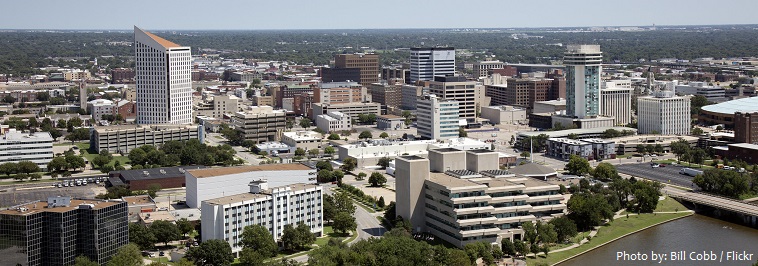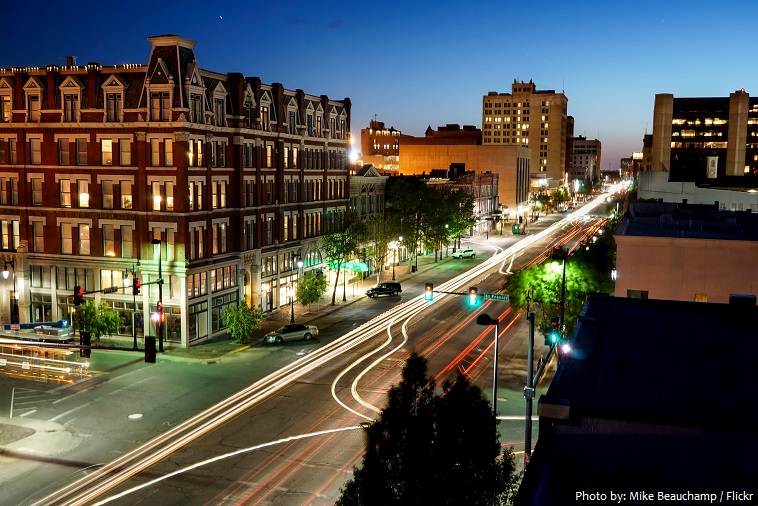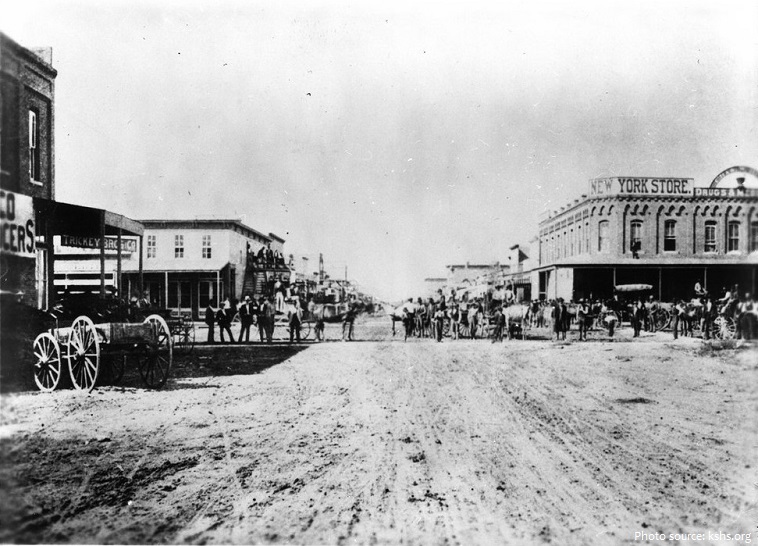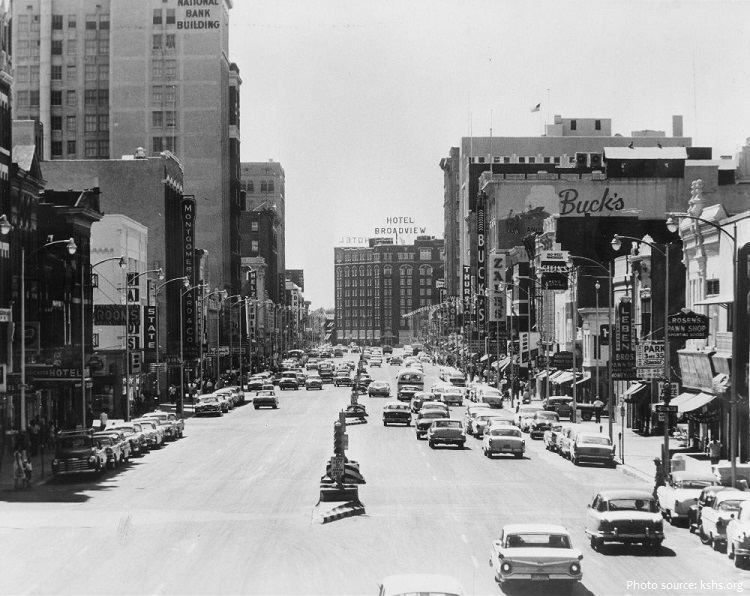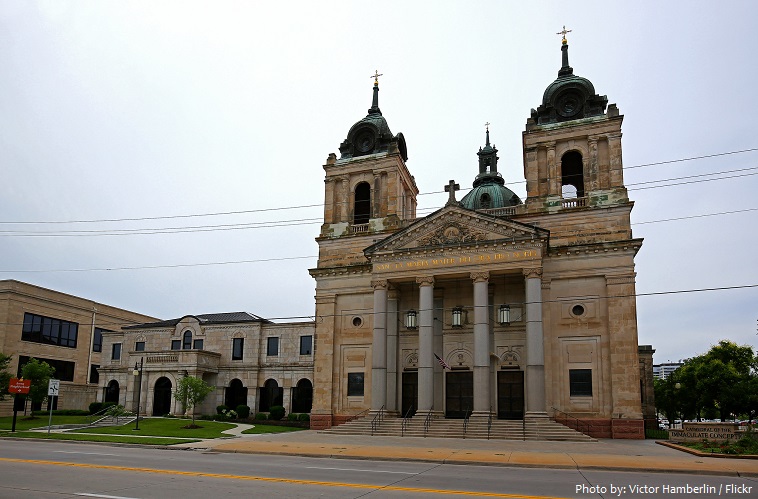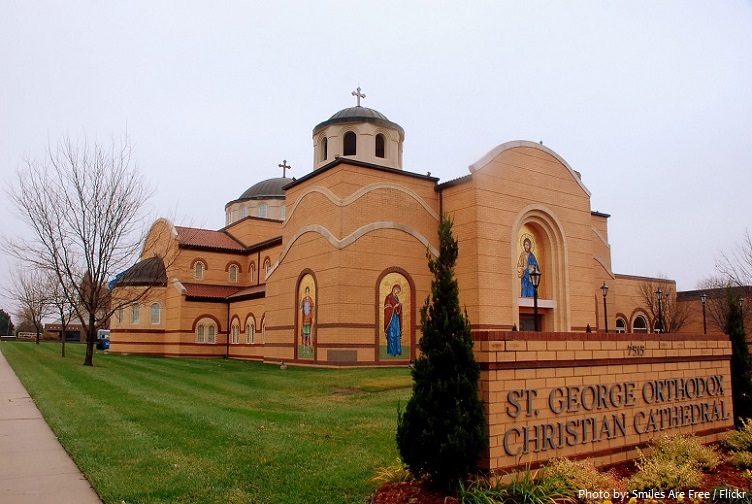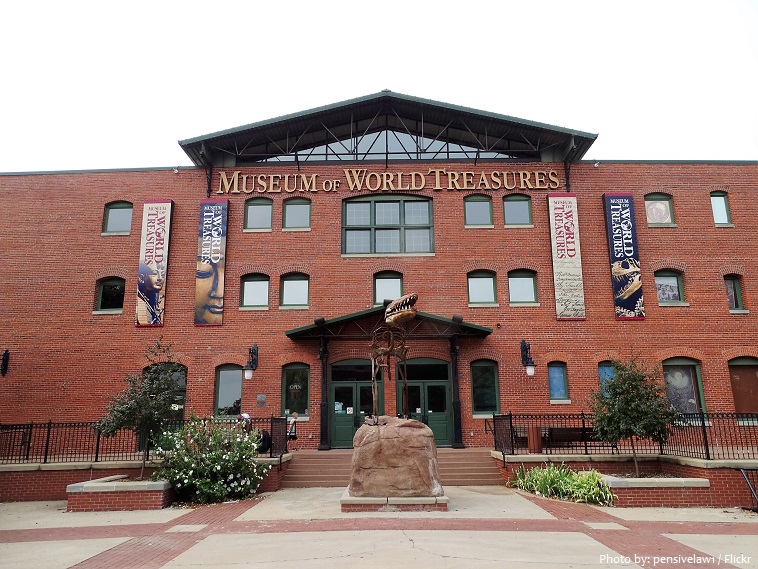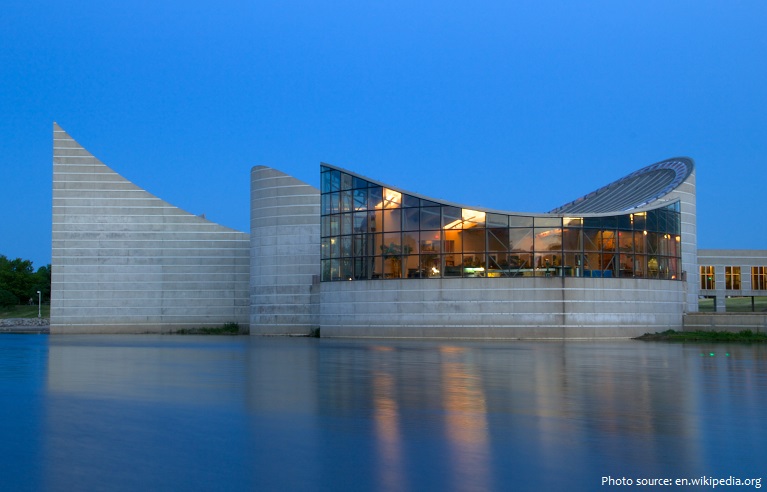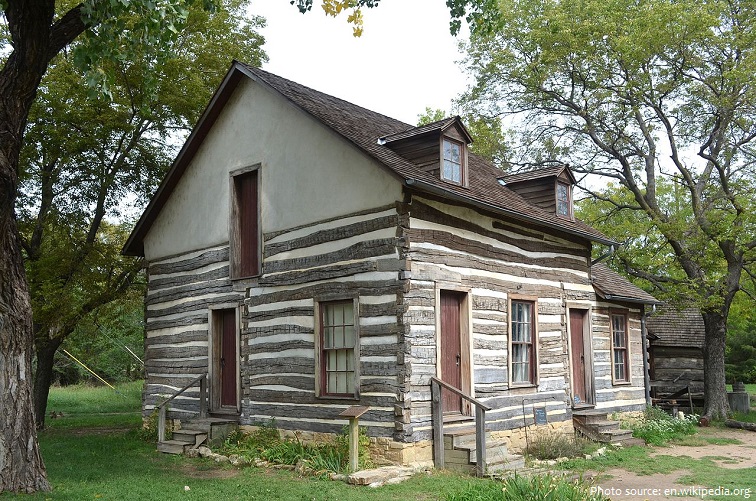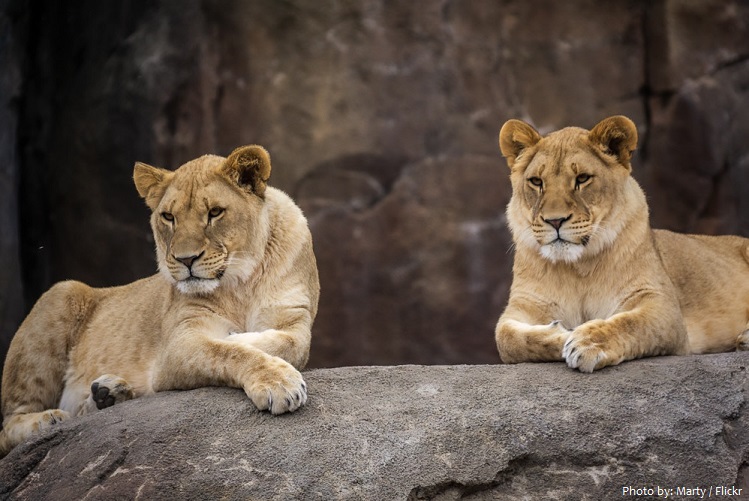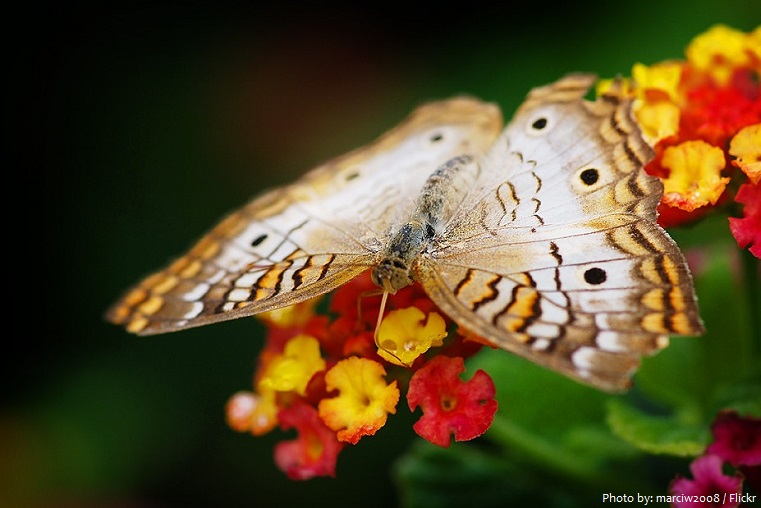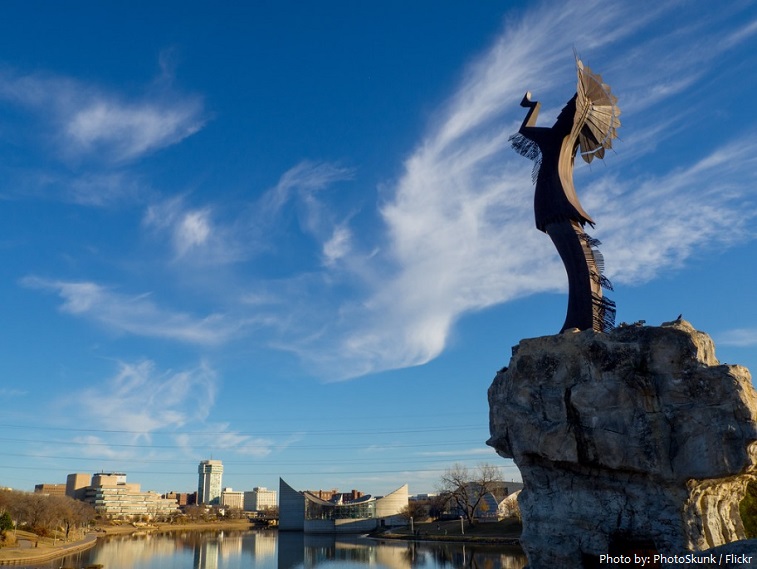Wichita is the largest city in the US state of Kansas.
It is located in south-central Kansas on the Arkansas River.
As of October 2020, the population of Wichita is about 395,000 people. It is the 51st most populous city in the United States.
The city covers a total area of 430 square kilometers (166 square miles).
The average altitude is 397 metres (1,302 feet) above sea level.
Wichita was founded in 1864 as a trading post on the site of a village of the Wichita Indians.
It owed its early development to the Texas cattle trade along the Chisholm Trail and to the rapid spread of agricultural settlement along the Atchison, Topeka and Santa Fe Railway, then under
construction.
It became a destination for cattle drives traveling north from Texas to Kansas railroads, earning it the nickname “Cowtown”.
By 1875 farmers’ fences were obstructing the movement of beef herds, but grain became an important commodity.
Growth was continuous and rapid after 1900, with the population surpassing 100,000 in the 1920s and 250,000 in the 1950s.
In the 1920s and 1930s, businessmen and aeronautical engineers established aircraft manufacturing companies in Wichita, including Beechcraft, Cessna, and Stearman Aircraft. The city became an aircraft production hub known as “The Air Capital of the World.”
The discovery of oil there also added to the city’s wealth.
Today, Wichita is an industrial hub with a rich culture.
The Cathedral of the Immaculate Conception, also known as St. Mary’s Cathedral, is a Catholic cathedral in Wichita. It is the seat of the Diocese of Wichita. The first Catholic church was
constructed in Wichita in 1872. The cathedral parish was founded in 1887. The present cathedral church was begun in 1906 and it was consecrated on September 19, 1912. It was designed by Emmanuel Louis Masqueray. Cardinal James Gibbons of Baltimore dedicated the church in the presence of 30 other Catholic bishops.
St. Mary Orthodox Church is an Orthodox Church in Wichita. It was founded in 1932 as a parish within the Antiochian Orthodox Christian Archdiocese of North America. Archdiocese is part of the Patriarchate of Antioch, which was founded by the Apostles Peter and Paul. (Antioch was also one of the 5 original patriarchal sees – Rome, Constantinople, Alexandria, Antioch, & Jerusalem – of the early Church.)
The Museum of World Treasures is a world history museum in Wichita. Among the many items on display are Tyrannosaurus, Daspletosaurus, and Tylosaurus specimens, Egyptian mummies, signatures of all the American presidents, a section of the Berlin Wall, and a genuine shrunken head. The Museum of World Treasures is not limited to a particular era of history, but has opted to display an extremely diverse collection representing many different fields of interest and a wide range of subjects.
Exploration Place is a science museum located on the west side of the Arkansas River in the Delano neighborhood of Wichita. This venue is the largest dome theater in Kansas with a 60-foot high, 360-degree screen. It shows digital films. General museum admission is not required to see a show at the dome.
Old Cowtown Museum is an accredited history museum located in Wichita. It is located next to the Arkansas River in central Wichita. The Museum was established in 1952, and is one of the oldest open-air history museums in central United States with 54 historic and re-created buildings, including a period farm and out-buildings, situated on 23 acres of land off the original Chisholm Trail. Cowtown is a combination of attraction, museum, living history site, and historic preservation project.
The Wichita Art Museum is an art museum located in Wichita. The museum was established in 1915, when Louise Caldwell Murdock’s Will which created a trust to start the Roland P. Murdock Collection of art in memory of her husband. The trust would purchase art for the City of Wichita by “American painters, potters, sculptors, and textile weavers.”
The Sedgwick County Zoo is an AZA-accredited wildlife park and major attraction in Wichita. Founded in 1971 with the help of the Sedgwick County Zoological Society, the zoo has quickly become recognized both nationally and internationally for its support of conservation programs and successful breeding of rare and endangered species. Having over 3,000 animals of nearly 400 species, the zoo has slowly increased its visitors and now ranks as the number one outdoor tourist attraction in the state.
Botanica, The Wichita Gardens was opened in 1987 as a collaboration between the Wichita Area Garden Council and the City of Wichita. Originally it had four gardens and now encompasses about 7 hectares (17.5 acres ) of botanical gardens.
The Keeper of the Plains is a 13.4 metres (44 feet) Cor-Ten steel sculpture by Kiowa-Comanche artist Blackbear Bosin. It stands at the confluence of the Arkansas and Little Arkansas rivers in
Wichita. Surrounding the base of the statue are multiple displays which describe the local tribes that used to inhabit this area, as well as several fire pits which sometimes light up to illuminate
the statue at night.
Wichita is home to the National Baseball Congress, the governing body for adult nonprofessional baseball in the United States, and Mid-Continent Airport, in the southwestern part of the city, is the headquarters of the International Flying Farmers, a pilots’ association.
Wichita is the music hub of central Kansas, and draws major acts from around the world, performing at various concert halls, arenas and stadiums around the area.
The annual Wichita River Festival, held in May, is a popular multiple-day event.
